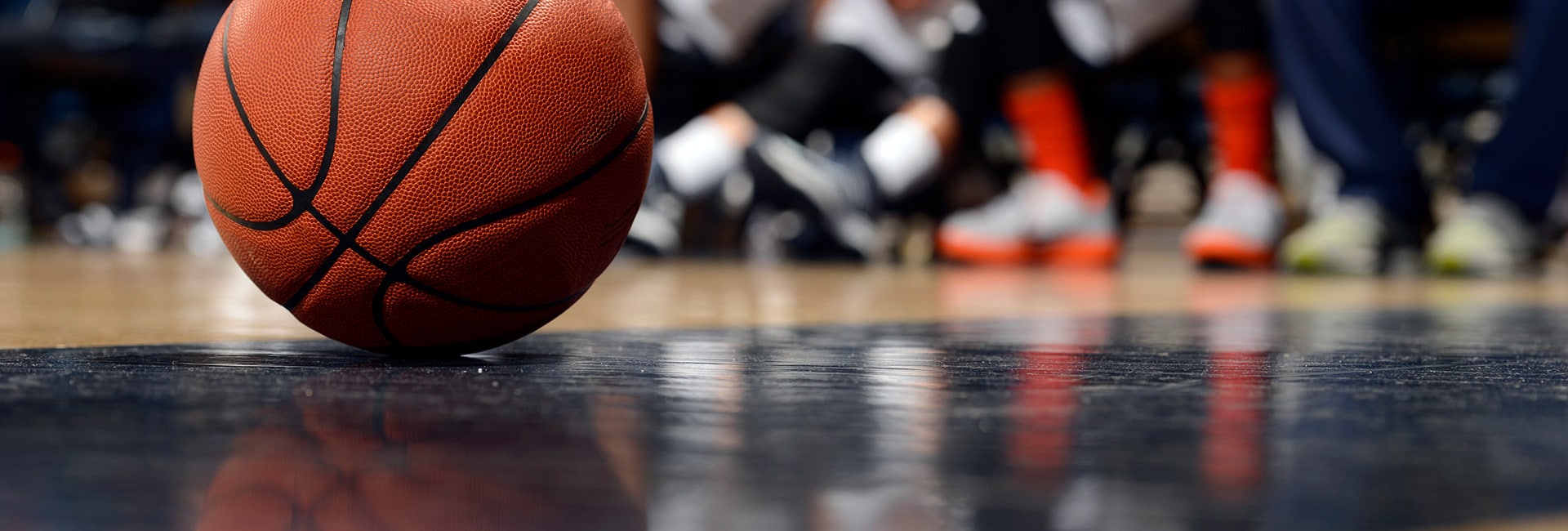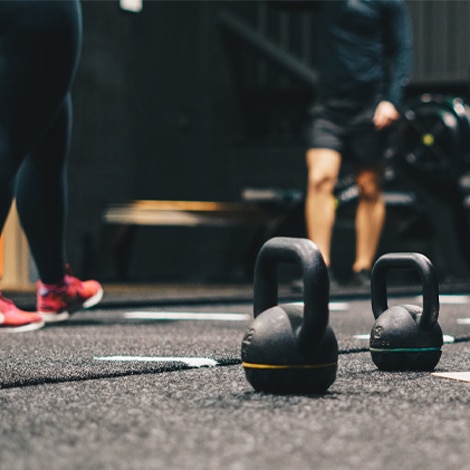by Marcus Colby
Over the past few years, the NBA, the G League, and pro basketball in general has made great advances in statistical analysis, performance monitoring, and wellness tracking. But with far more potential inputs than ever before, there’s a pressing need to capture, aggregate, and centralize all of this player information so that it can be turned into knowledge and wisdom that improves athletes’ outcomes on the court and enhances their recovery and overall wellbeing off of it. In this article, I’ll share five key integrations between devices and the kind of athlete management system (AMS) that can help basketball organizations make the most of their technology investments.
PLAYER READINESS
Technology: VALD and Hawkin Dynamics
VALD’s ForceDecks and Hawkin Dynamics’s HD Force Plates are often used to do what their names suggest and assess athletes’ ability to generate force and power, both of which are key for basketball players. While they are utilized in this way in the NBA, G League, and other pro basketball leagues, strength and conditioning (S+C) coaches also use these valuable tools to evaluate player readiness, which becomes particularly important as the season goes on.
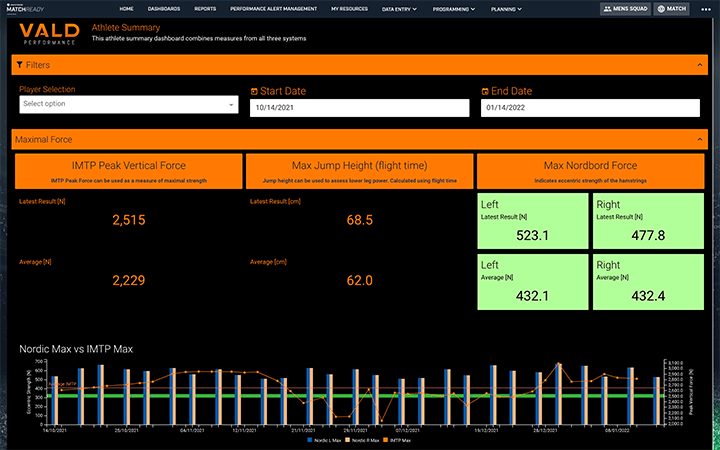
A tight integration between the leading force plate systems and an AMS such as Smartabase can help basketball performance professionals compare players’ current testing data to their historical information. Beyond a certain pre-determined threshold, a significant decrease in a player’s power output can indicate reduced neuromuscular readiness, less muscle fiber recruitment, and an overly-fatigued central nervous system that could compromise their output on game day. If this is the case, the player’s practice load can be reduced for a few days to ensure that they’re fully recovered and ready to play their best, rather than sluggish and worn down.
SLEEP MONITORING
Technologies: Oura Ring
When the NBA moved players, coaches, and support staff into a bubble in Orlando, Florida during the COVID-19 pandemic, the spotlight shone on athlete wellness more brightly than ever before. The league’s partnership with Oura enabled teams to capture real-time data on every participating player’s sleep duration and quality, heart rate variability (HRV), heart rate, and more from a convenient, finger-worn device.
Integrating this information into an AMS like Smartabase makes it easier for coaches to spot when a player’s recovery numbers have deviated too far from their normal baseline. A poor night’s sleep now and again is unlikely to have much of an impact on the court or in the gym, but if a player is consistently getting inadequate rest, their performance will be compromised, and they will become more susceptible to injury and illness. When a member of the performance staff notices such a trend, they can intervene and try to help the player improve their sleep hygiene and nighttime routine so that they get back on track.
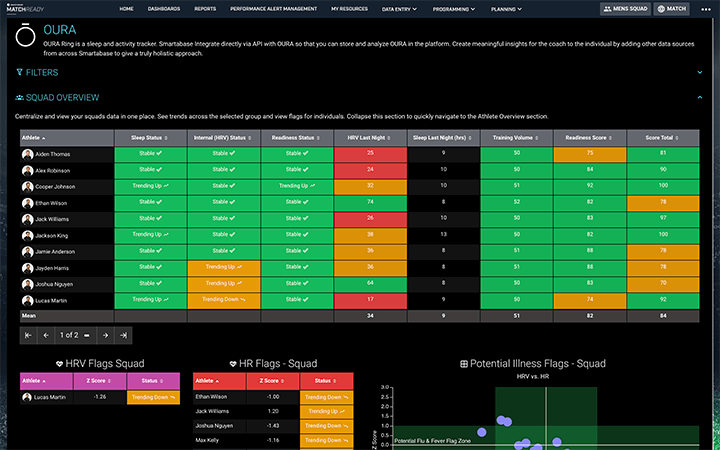
Similarly, low HRV and/or high resting heart rate during inactivity can indicate that a player is either being overloaded or is under-recovering. If this persists for several days, a member of the performance team could either reduce the player’s overall training load, educate them on recovery methods that have been shown to increase HRV – such as breathwork – or both. The latest version of the Oura Ring has a meditation/mindfulness feature that can guide a player through a calming session and then presents before-and-after data to show the positive impact on metrics like heart rate, HRV, and body temperature. Having all recovery data in a centralized hub makes it easier to take this kind of corrective action and improve players’ overall wellbeing.
PLAYER TRACKING
Technologies: Kinexon and Second Spectrum
An integration between Kinexon and Second Spectrum enables pro basketball performance staff to track players’ displacement on the practice court, their statistics during games, and, in the case of Kinexon kiosk, player health data. Capturing all this information in an AMS such as Smartabase provides teams with deeper insights into both individual and team potential and enables the coaching staff to decide which combination of players is most effective given the overall availability of the squad at any given point in the season.
Individual game stats can provide a snapshot of how each player performed in all four quarters of a basketball game through data sets like Second Spectrum’s speed-load table. But it’s when this information is combined with data from practices and previous games that the performance staff can more accurately monitor load across the entire season, or even a player’s whole career. Such a holistic view gives coaches the ability to assess side-by-side comparisons of individuals who play the same position so that they can make more informed decisions about the best lineups to use in certain game situations. The S+C coaches can see which players have been exposed to the highest loads during games, and those that haven’t received enough. The former might do less in practice and the weight room the next day, while bench players who registered little or no displacement in competitive play could be exposed to greater loads to ensure their readiness remains high in case they’re required to contribute more minutes in future games.
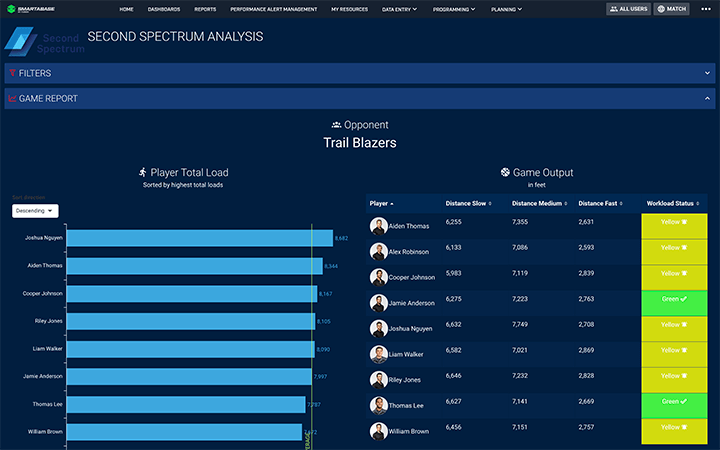
STRENGTH & CONDITIONING
Technologies: TeamBuildr and BridgeAthletic
Strength and conditioning at NBA teams and other pro basketball clubs presents different challenges than those faced by pro and college football squads that deal with a lot of players and a high coach-to-athlete ratio but a low total number of games per year. While basketball S+C coaches can provide more personalized programming as there are only 15 players on each active roster, they must take the hectic travel schedule, much higher number of games per season, and the density of the regular season and playoff calendar into account. This makes it even more crucial that they have access to overall player load numbers and can spot trends as they emerge so that they can adjust player programming on the fly to improve game day readiness.
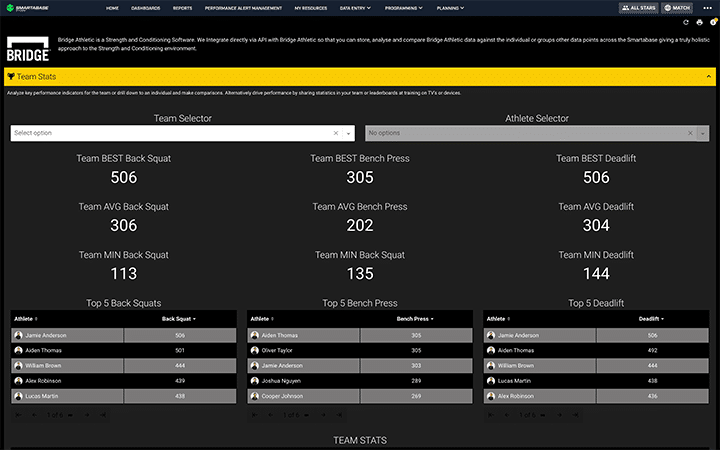
Pulling strength and conditioning data from TeamBuildr or BridgeAthletic into an AMS like Smartabase makes it easier for S+C coaches to analyze each player’s information with greater context. Combining an up-to-date record of everything that happens in the weight room with data points from practice, games, and off-court recovery provides a more well-rounded view of the athlete, enabling staff to create all-in-one reports for the head and assistant coaches so that they can see how well each member of the roster is progressing.
INJURY REDUCTION/STRENGTH MONITORING
Technologies: KangaTech and VALD
Basketball performance staff can utilize the KangaTech KT360 and VALD ForceFrame for strength monitoring, and they’re also useful for identifying factors that can indicate elevated injury risk. Then, if a player is already hurt, such systems are useful for deciding when they’ve regained certain functional capacities and can be cleared for the next stage in the return-to-play process. The KT360 enables strength coaches, athletic trainers, and other professionals to conduct 35 isometric and eccentric tests. It then suggests protocols for muscle control, strength, pain modulation, endurance, and time under tension. The ForceFrame makes it simple to test isometric strength in the upper and lower body – including hip, knee, shoulder, ankle, and neck muscle groups – as well as to perform custom tests. Players can then work on their isometric strength with over 130 different exercises. Both the KT360 and ForceFrame provide real-time feedback and are useful for regular athlete testing and monitoring the progress of injured players.
When either system is integrated with an AMS like Smartabase, S+C coaches and members of the medical staff can view players’ historical data and see if they notice any meaningful patterns. If a player’s neuromuscular control declines, they’re demonstrating increasing left/right asymmetry, or they have a significant imbalance, this could suggest that they’re at greater risk of injury. To reduce the chance of this, they can be prescribed corrective exercises and then re-tested to check their progress.
There has never been a better opportunity to unite what occurs in basketball games, practices, strength and conditioning sessions, and recovery. The AMS integrations detailed above combine to offer teams a more complete picture of each player and the squad overall so that coaches can maximize performance potential and improve overall wellness.

